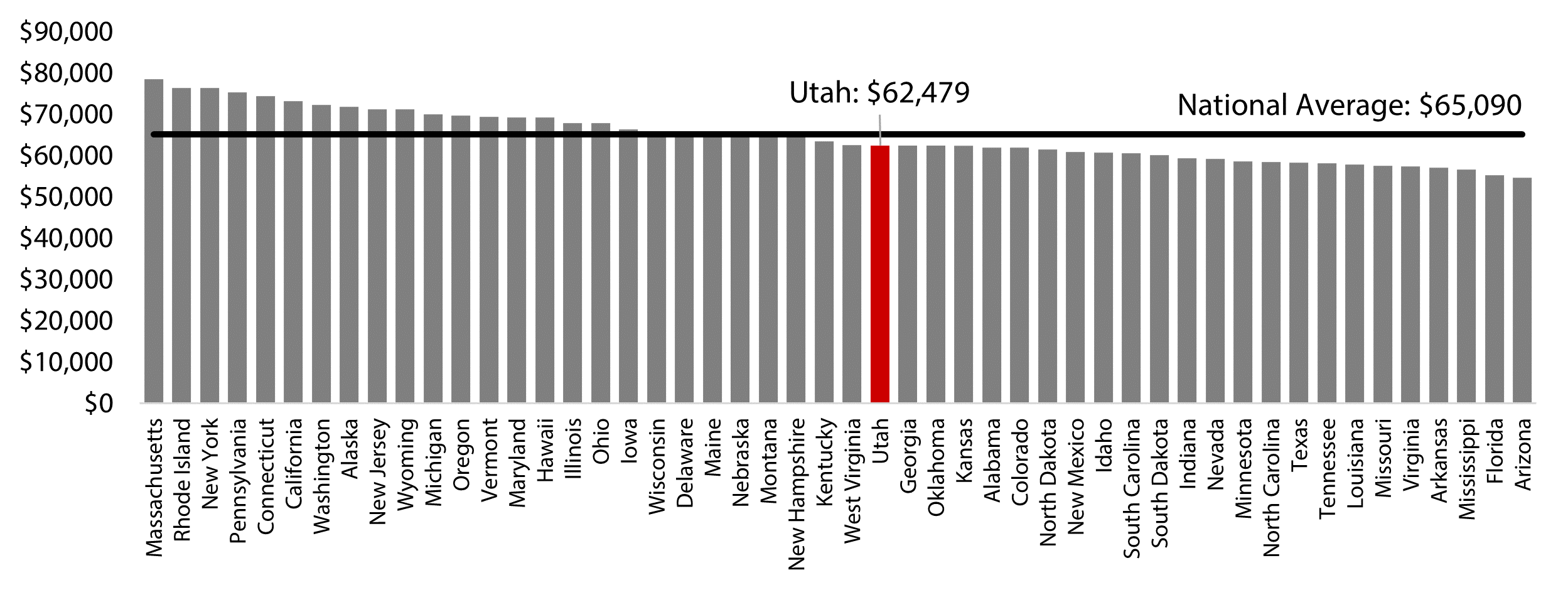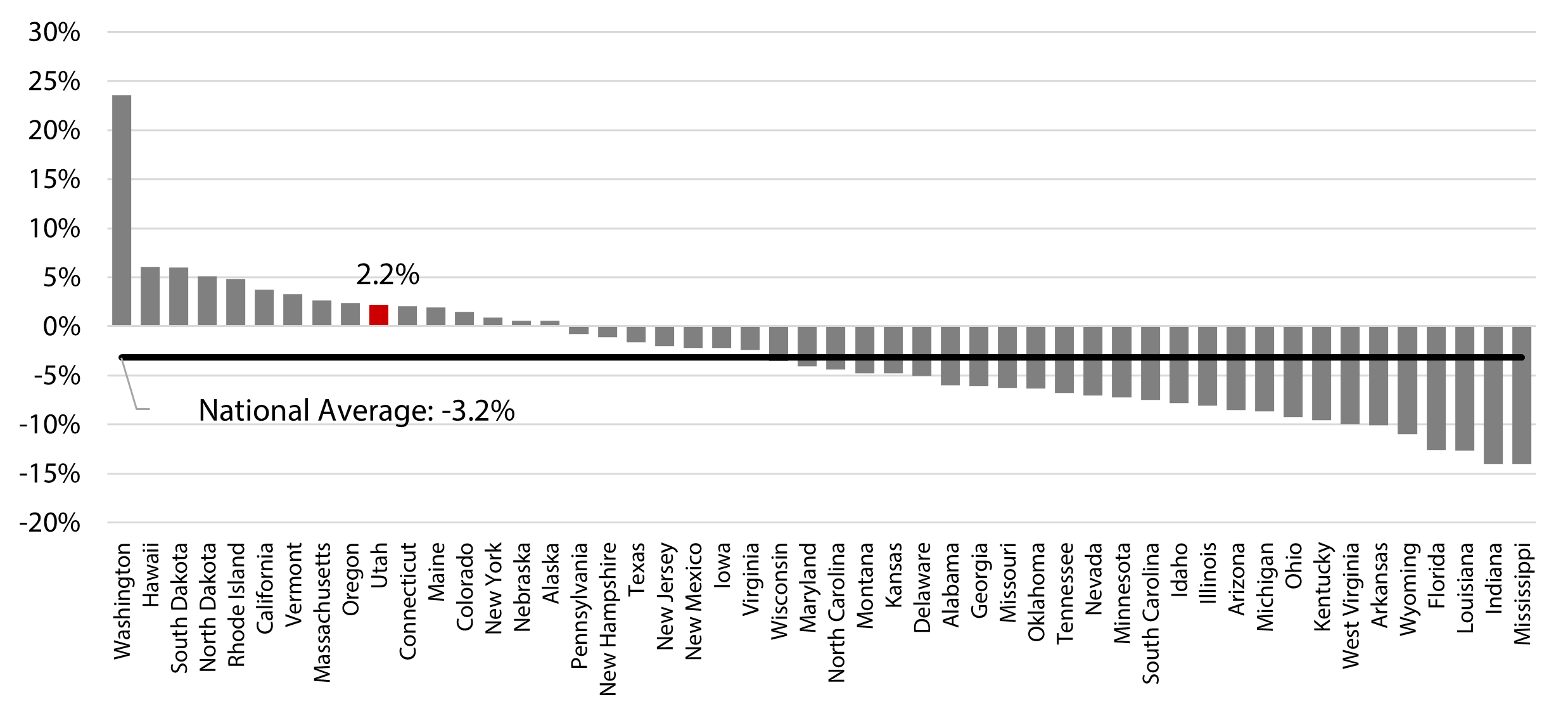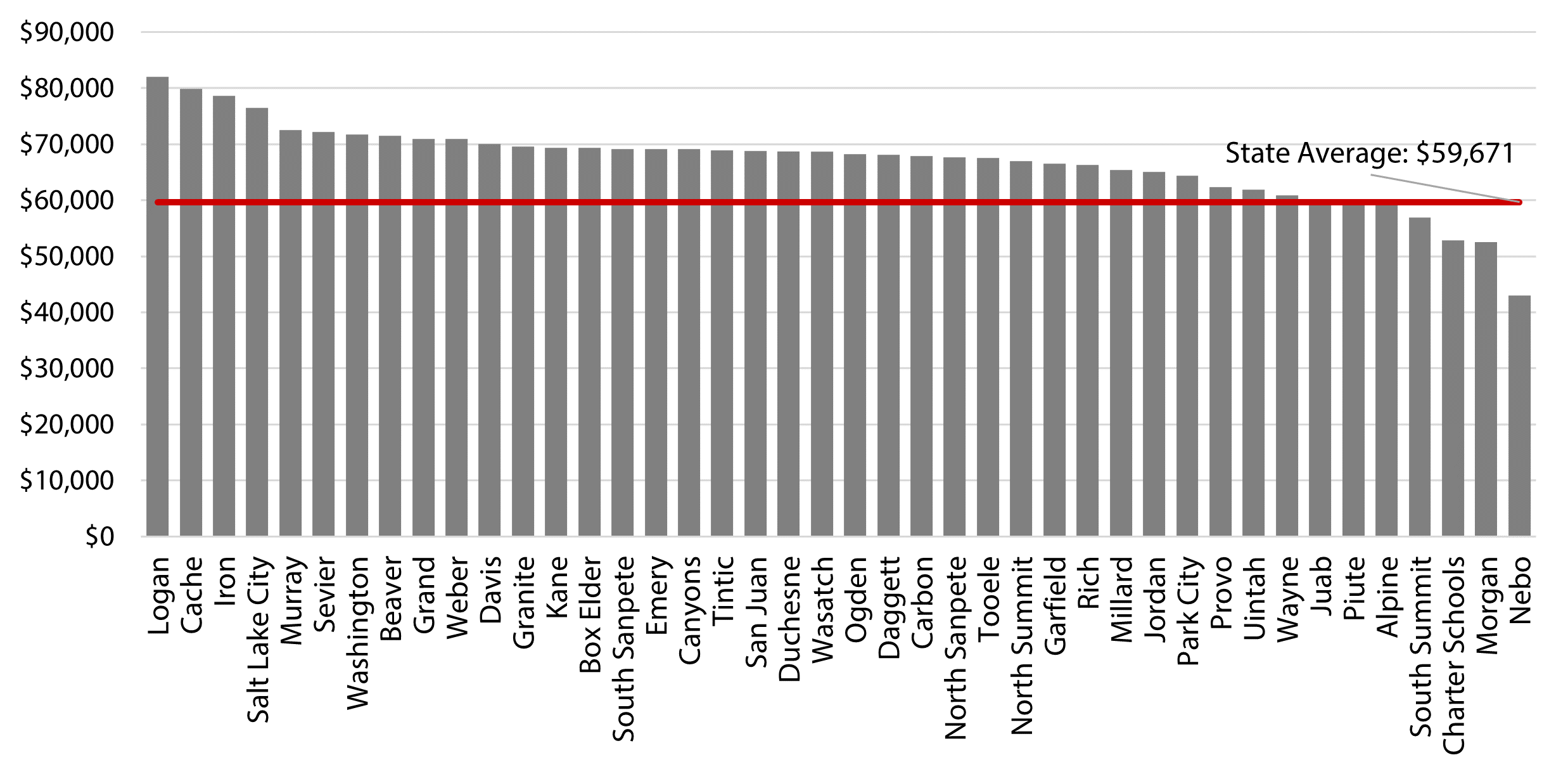Blog Post
Insight: Teacher Salaries: How Does Utah Compare?
By: Andrea Thomas Brandley
Note: The opinions expressed are those of the author alone and do not reflect an institutional position of the Gardner Institute. We hope the opinions shared contribute to the marketplace of ideas and help people as they formulate their own INFORMED DECISIONS™.
Teacher salaries are receiving a boost as Utah’s 2023 legislative session concludes. H.B. 215 “Funding for Teacher Salaries and Optional Education Opportunities” provides licensed educators with an annual $4,200 pay raise (with an extra $1,800 in benefits). Additionally, S.B. 183 “Educator Salary Amendments” will tie educator salary adjustments to the weighted pupil unit (WPU) growth rate, positively impacting the growth of teacher salaries over time.
With significant changes to teacher salaries on the horizon, I wondered, how do Utah teacher salaries compare nationally?
Figure 1 shows the estimated K-12 teacher salary for every state, adjusted for cost of living, for the 2020-2021 school year. When comparing teacher salaries across states, Utah’s salary of $56,918 ranks 30th. When adjusted for cost of living, Utah’s adjusted average salary increases to $62,479, ranking 28th. Utah’s adjusted average salary trails the national average ($65,090) by a few thousand dollars.
Figure 1: Estimated Adjusted Average Annual K-12 Teacher Salary by State, 2020-2021
(Adjusted for Cost of Living using the Comparable Wage Index for Teachers, CWIFT)

Source: National Center for Education Statistics Table 211.60 and Comparable Wage Index for Teachers
Figure 2 illustrates how teacher salaries have changed over the last decade. Teacher salaries are primarily government-funded and can therefore be impacted by economic downturns. So rather than comparing teacher salaries directly, Figure 2 shows the percent change in real (adjusted for inflation) teacher salaries from 2009-2010 to 2020-2021. While most states saw declines in teacher salaries during this period, Utah was one of 16 states to experience an increase. This could reflect recent efforts to increase education funding and improve teacher salaries in Utah. It could also indicate that Utah has more stable teacher salaries that are less influenced by fluctuations in the economy when compared to other states.
Figure 2: Percent Change in Inflation-Adjusted Teacher Salary by State, 2009-10 to 2020-21

Source: National Center for Education Statistics Table 211.60
That said, not all teacher salaries in Utah are equal. Utah teacher salaries differ across Utah’s school districts. Data for the 2021-2022 school year show an average statewide teacher salary of $59,671. Salt Lake City has the highest average salary at $71,599 while Nebo School District has the lowest salary at $39,916. These rankings change, however, when adjusted for cost of living. Figure 3 shows average annual teacher salary adjusted for cost of living by school district. With this adjustment, Logan School District and Cache School District have the highest adjusted salaries, while Salt Lake City School District drops to fourth. Nebo School District still ranks the lowest, with an adjusted salary of $43,013.
Figure 3: Utah Adjusted Average Annual K-12 Teacher Salary by School District, 2021-2022
(Adjusted for Cost of Living using the Comparable Wage Index for Teachers, CWIFT)
 Note: The charter school average was not adjusted for cost of living due to the geographic diversity of charter schools.
Note: The charter school average was not adjusted for cost of living due to the geographic diversity of charter schools.
Source: Utah State Board of Education
Teachers make up a large share of Utah’s economy with more than 30,000 full-time equivalent (FTE) Utah teachers educating nearly 675,000 public K-12 students in the 2021-22 school year. Understanding teacher salary comparisons can lead to more informed decisions as the state, education leaders, and policymakers consider ways to continue to improve teacher salaries and work to recruit and retain highly effective educators in Utah classrooms. As updated data is released in the coming years, we will gain a greater understanding of how the legislation passed this year impacts these comparisons.
Andrea Thomas Brandley is the senior education analyst at the Kem C. Gardner Policy Institute and a former teacher in Utah’s K-12 public schools.

